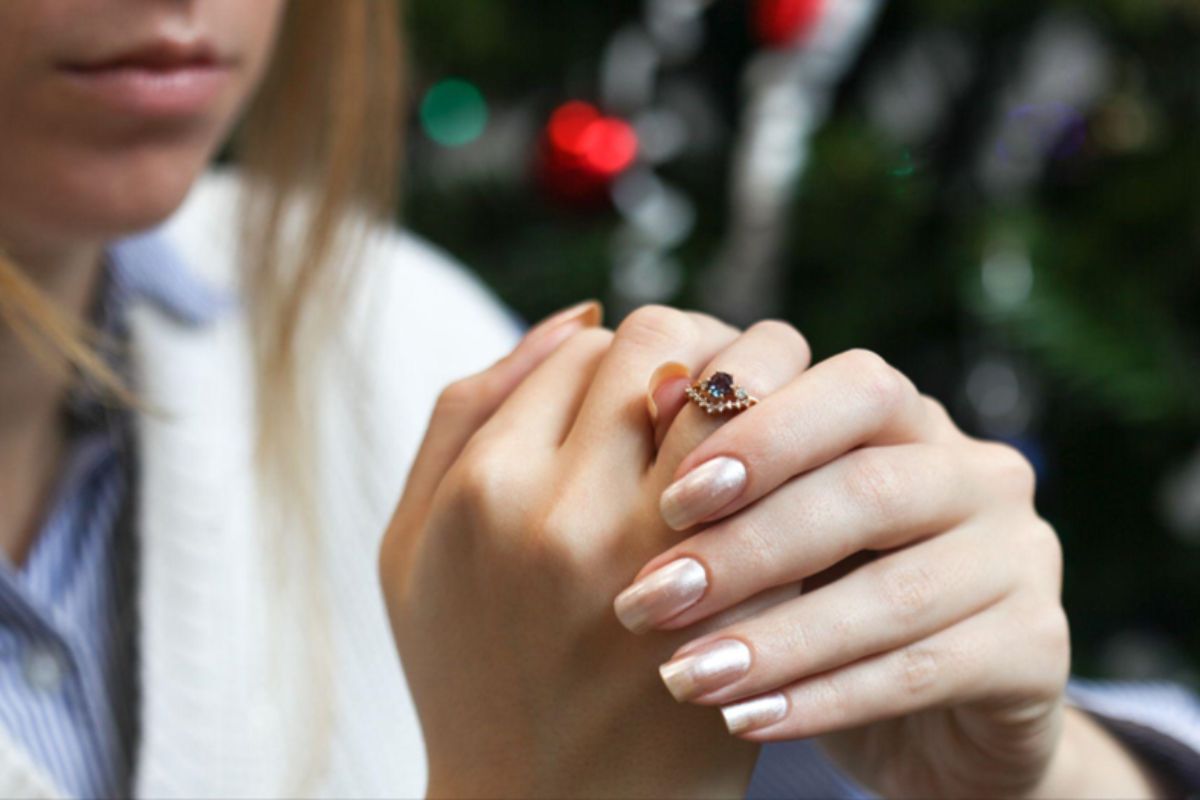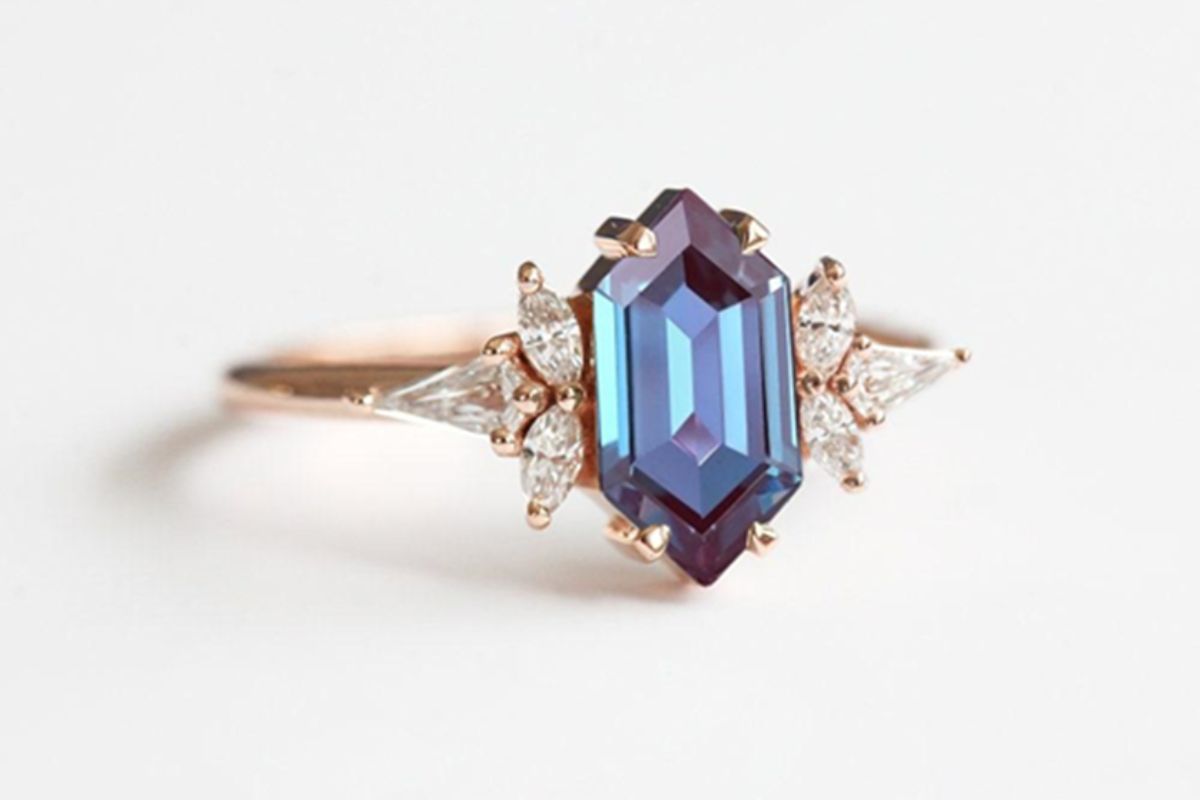Lab-Grown vs Natural Alexandrite: What You Need to Know

The alexandrite stone has gained attention in recent years as more couples look for unique alternatives to the traditional diamond ring. Its distinct color-changing ability makes it one of the most interesting gemstones available today. But as demand grows, so does the need for clarity, especially when deciding between a natural alexandrite stone and a lab-grown alexandrite.
Table of Contents
ToggleWhat Is Alexandrite?
Alexandrite stone is a variety of chrysoberyl known for a rare optical property called color change. In daylight, the stone appears green or bluish-green. Under warm indoor lighting, it shifts to a reddish-purple or violet tone. This natural phenomenon makes alexandrite a highly sought-after gem in both natural and lab-created forms.
Lab-Grown Alexandrite
Lab-grown alexandrite is created using processes that replicate the conditions under which the natural stone forms. These synthetic stones have the same chemical composition, crystal structure, and color-changing properties as natural ones. In most cases, even trained gemologists need specialized tools to distinguish between natural and lab-created stones.
The main difference lies in availability and cost. Lab-grown alexandrite stones are more widely accessible and cost significantly less than their natural counterparts. This allows for greater flexibility in terms of size, shape, and design when selecting a stone for an alexandrite engagement ring.
For many buyers, lab-grown stones offer a practical way to enjoy the aesthetics and uniqueness of alexandrite without the high cost. They also present an option for those who value consistency and sustainability, as lab-grown stones avoid some of the environmental and ethical concerns tied to mining.

Natural Alexandrite
Natural alexandrite is extremely rare. It was first discovered in Russia in the 1830s and has since been found in smaller quantities in Sri Lanka, Brazil, and East Africa. Because of its limited supply and unique optical features, high-quality natural alexandrite is considered a collector’s gem and is priced accordingly. The rarity of natural stones means that size and quality come at a premium.
Alexandrite stones with strong, visible color change and good clarity can be significantly more expensive per carat than diamonds. Natural stones are often certified and sold with documentation verifying origin and grading. When choosing a natural alexandrite stone, buyers are often motivated by its scarcity and long-term value. However, the price can be a limiting factor for many, especially for larger carat sizes.
Visual Differences and Quality
In most cases, the visual difference between natural alexandrite and lab-grown alexandrite is minimal. Both exhibit the color change effect, although the intensity can vary from one stone to another. Higher-quality stones, natural or synthetic, will show a more noticeable transition between green and red tones under changing lighting.
Clarity is another factor. Lab-grown stones tend to have fewer inclusions, as they are produced in controlled conditions. Natural stones often contain small inclusions, which are not necessarily flaws but do influence grading and value.
Choosing Between Natural and Lab-Grown Alexandrite
The decision between natural and lab-grown alexandrite depends on a few key factors:
- Budget: Lab-grown options are more affordable and allow for larger stones or more elaborate designs.
- Rarity and Investment: Natural stones are limited in supply and may hold more long-term investment value.
- Sustainability and Ethics: Lab-grown alexandrite is not tied to traditional mining practices, which may appeal to buyers focused on environmental impact.
- Visual Expectations: Both options offer the signature colour change, but natural stones may vary more in tone and clarity.
Both natural and lab-grown alexandrite stones offer the same unique optical features that make this gem stand out. The decision between them comes down to price, origin, and purpose. Natural stones offer rarity and potential long-term value. Lab-grown stones provide a more affordable and accessible way to enjoy the distinct look of alexandrite in an engagement ring.
If you’re considering an alexandrite engagement ring, Capucinne offers handcrafted designs with both natural and lab-created stones. Their team can help you explore each option and find a ring that matches your needs, values, and budget.
Whether you choose lab-grown or natural alexandrite, both offer stunning beauty and unique charm. The best choice depends on your values, budget, and what the gem means to you.
Published by Chloe Jhonson
With over 5 years of experience in content creation, I specialize in crafting engaging posts across various topics — from fashion, lifestyle, business & tech. Join me as I share insights & ideas to inspire your journey! View more posts
Recent Post
SAP Testing Automation: Tools & Best Practices

A Guide to 3D Rendering Services Across the UK






